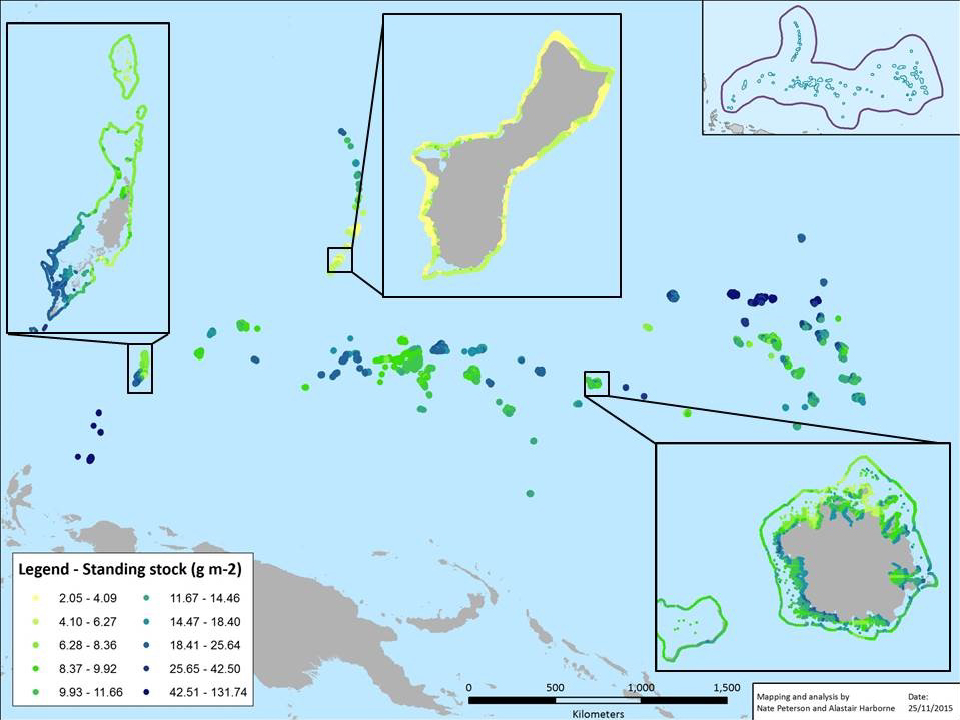
Ecosystems: Coral Reefs
Ecosystem Services: Fisheries
Projects and Places: Micronesia Coral Reef Fisheries, Chuuk Marine Spatial Planning
Overview
Micronesia covers 6.7 million square kilometers of Pacific Ocean, an area nearly equal to the continental United States. The region contains four percent of the world’s coral reefs and 480 species of coral—60 percent of all known species. It is also home to 650,000 people whose livelihoods and economies are highly dependent on functional reef systems. Yet these reefs are under threat from both local and global stressors, and insufficient resources and management capacity jeopardize their long-term well-being.
In 2006, leaders from the region stepped forward with the Micronesia Challenge, committing countries and jurisdictions to conserve at least 30 percent of near-shore marine resources and 20 percent of terrestrial resources by 2020. The Challenge includes the Federated States of Micronesia, the Republic of the Marshall Islands, the Republic of Palau, the U.S. Territory of Guam and the U.S. Commonwealth of the Northern Mariana Islands. More information on the Nature Conservancy’s work in Micronesia can be found at The Nature Conservancy in the Pacific Islands.
Mapping Ocean Wealth is building on existing knowledge of the region’s ecosystem services, with a particular focus on factors that affect the productivity of Micronesia’s coral-reef fisheries.
Projects and Places
Top image: © Ian Shive. Photo Credits in Text: © Ian Shive, © Nick Hall







